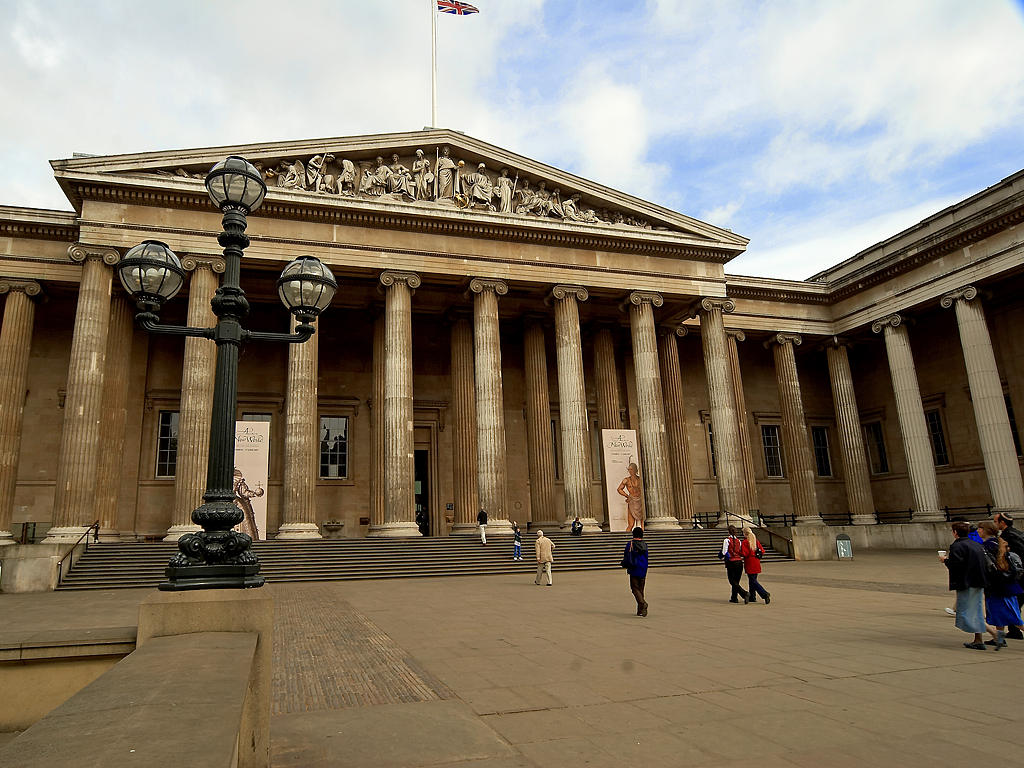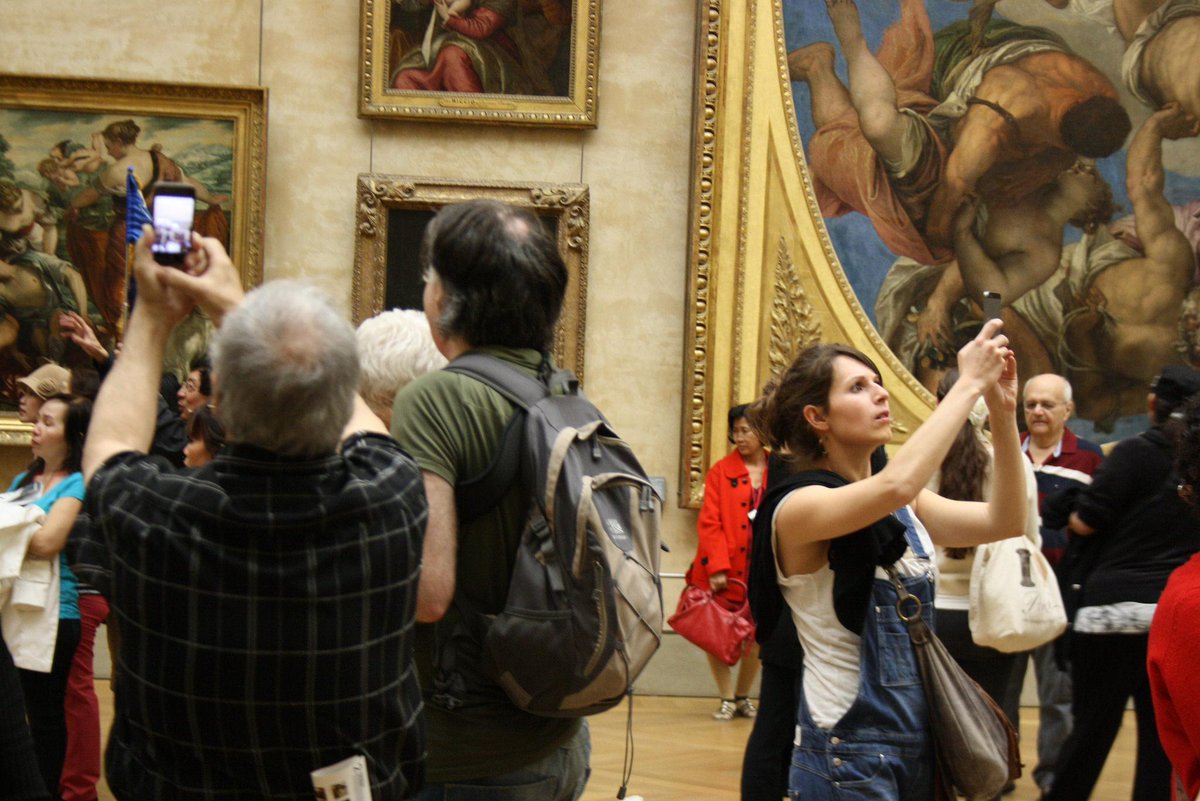I love Italy, really I do. Great food, great art, great landscape. Transport is fantastic; well-maintained roads (well, better than UK or US), cheap, regular and reliable trains. But the experience of trying to see art in Italy is so needlessly fraught. I look forward to writing some upbeat blog posts about the wonderful things I saw on a recent trip to the Adriatic coast, but first I must vent.

At Ancona the museum greeted me with this permanent-looking sign. The wonderful collection of Crivelli, Lotto and Titian is closed; who knows where the pictures are during the 'work in progress'. Websites are almost non-existent and usually useless; you can never check these things in advance. But closure is common - short term or long term, vicarious or strategic, partial or complete. In Bologna an entire wing of the museum was closed. A preposterous local exhibition of art 'from Cimabue to Morandi' had claimed the museum's greatest masterpiece, a Raphael altarpiece that ought never to be lent, but this is at least its third trip in the past two years alone.
The Adriatic coast is a place of artistic pilgrimage for Lorenzo Lotto. Many of his works are in small and remote hill towns, and he was a major reason for my own visit. The biggest concentration is in Loreto, where he died. They have nine, usually on display in this room. Only one was on display when I visited.
The other artist I wanted to see was Piero della Francesca. I'd been planning for years to do the next leg of the
Piero Trail, which I'd previously had to postpone at the last minute when I discovered a key picture was on loan in America. I was especially delighted to see two great masterpieces in Urbino, in a beautiful place in gorgeous hill town set in stunning countryside. What could possibly go wrong? Well, this:

The picture is unframed, behind an ugly glass panel under a harsh spotlight. Alas, this is common practice in Italian museums. Pictures are lit up like displays in a department store. And the lack of frames is lamentable. One of the most wonderful things about Italy is context - you get to works of art in historic settings, often part of collections of local art that give a much greater feel for regional genius than you get in a 'highlights' display in the great universal museums. But it seems they almost purposely rebel against that, seeking to show pictures shorn of context, presented as icons against a bare wall.
Many museums are open only a few hours a day, sometimes just a morning, often with a break of two or three hours at lunchtime. Sometimes they will let you stay after closing time, which is wonderful. But it makes the logistics of visiting quite a challenge. The obvious response is that more funding is needed. But I'm not sure that's true; one are is grossly over-funded. There is never a lack of funding for major restoration projects, many of which are dreadful.
In Rimini they are systematically wrecking their art collection. Conservators (I use the word loosely) are stripping down anything they think is repaint. Most museums have long since moved away from such drastic and irreversible action, which risks removing original paint in error. Instead of recreating what's lost, the Rimini restorers are replacing lost paint with hatching, to ensure we can tell what is original and what is restored. In some cases it works, particularly where large losses would require significant recreation. But the point is to avoid visual distraction. In Rimini it's done dreadfully and it's hugely visually distracting. Look at this detail from a Crucifixion attributed to Giovanni da Bologna, restored in 2013. An original fragment looks like it's been stuck on a piece of cheap furniture. The remaining paint seems to float on ugly and intrusively coloured background.

They are so proud of their work on an altarpiece by Guiliano da Rimini of the Coronation of the Virgin with Saints that there's a 'before' photo shown next to it. Trouble is, it looked better before. Now the picture is ambiguous; is the hatching in the picture below covering an area of lost gilding or lost landscape? From a distance you can't tell; the contours are ambiguous. Originally the gold ground established a clear delineation between painted scene and background; now it's a blur. Instead of seeing a damaged but coherent work of art, we are invited to contemplate little isolated souvenirs of original paint.

The saddest part of my trip was seeing the amazing frescoes by Salimbeni in Urbino. They are currently being restored, and I watched as a plasterer arrived with a big trowel and started throwing on plaster. As he worked it into the edges, original plaster sprinkled off onto the floor, and his big trowel bashed against the original paint. We think of restoration as a careful, clinical process. This was more like butchery. And in a few decades, the work will be re-done, the new plaster hacked out again, and a bit more of the original will be lost.
Italian museums seem too often to be run for the benefit of their conservators who get to play around with pictures to their heart's content. There is no money for basic things like keeping the doors open, providing guards, adequate lighting, decent display or a website. But they will fund an endless cycle of drastic restoration.
Rather than address existing problems, Italy is adding new ones. It seems keen to introduce the worst elements of modern museum practice. An ominous new sign hung at the entrance to the Museo Civici in Pesaro:
THE NEW CIVIC MUSEUMS AT PALAZZO MOSCA ARE PROPOSING TO BE THE STRONG DYNAMIC DRIVING FORCE BEHIND THE CULTURAL LIFE OF PESARO IN ADDITION TO FULFILLING THEIR INITIAL FUNCTION OF CONSERVING, VALUING AND EXHIBITING WORKS, THE MUSEUMS ARE PROMOTERS AND PRODUCERS OF NEW INITIATIVES LINKED BOTH TO LOCAL MUSEUMS AS WELL AS OTHER AREAS AND CONTEXTS.
MUCH SPACE IS DEDICATED TO CONTEMPORARY ART, NEW TECHNIQUES AND ARTISTIC EXPRESSIONS. THE AIM OF THIS SIGNIFICANT PROJECT OF RENEWAL IS TO ENCOURAGE MEMBERS OF THE PUBLIC TO GET INVOLVED WITH THE LIFE OF THE MUSEUM, ESPECIALLY THE YOUNG GENERATIONS, AND TO PROVIDE THE WHOLE COMMUNITY WITH LONGTERM STIMULI AND MANY REASONS TO VISIT THE GALLERIES.
THIS CHANGE IS THE RESULT OF A HAPPY COLLABORATION BETWEEN PUBLIC AND PRIVATE INDIVIDUALS AND HAS BENEFITTED (sic) FROM THE HELP OF PEOPLE WHO HAVE CONTRIBUTED THEIR PARTICULAR EXPERTISE.
THE MUNICIPAL ADMINISTRATION, WHOSE DUTY IT IS TO LOOK AFTER THE MUSEUM'S LEGACY AND VALUE THE COLLECTION IS COLLABORATING WITH SYSTEMA MUSEO, A LEADING FORCE IN THE PLANNING OF NEW FUNCTIONS FOR MUSEUMS. WHAT EMERGES THEREFORE IS A NEW MANAGEMENT MODEL CAPABLE OF CIRCULATING RESOURCES IN WHAT CONTINUES TO BE THE HEART OF EVERY MUSEUM, ITS ARTISTIC HERITAGE. (sic, passim!)
Everything about this is ominous. The meaningless guff, the self-promotion by the consultants ('Systema Museo'), and the commonplace belief that to be relevant art must be contemporary. In Bologna one room was closed. You couldn't get in to see the detached frescoes. But you could peer through a doorway at this trite scene of 'Tahir Square':
Relevant and worthy, no doubt. But also obvious, trivial, artless. It's horrible that Italian museums are following common practice elsewhere and using old masters as mere foil for contemporary trivia.
Next week, I'll write about the good things I saw. But sadly there was much to lament.















